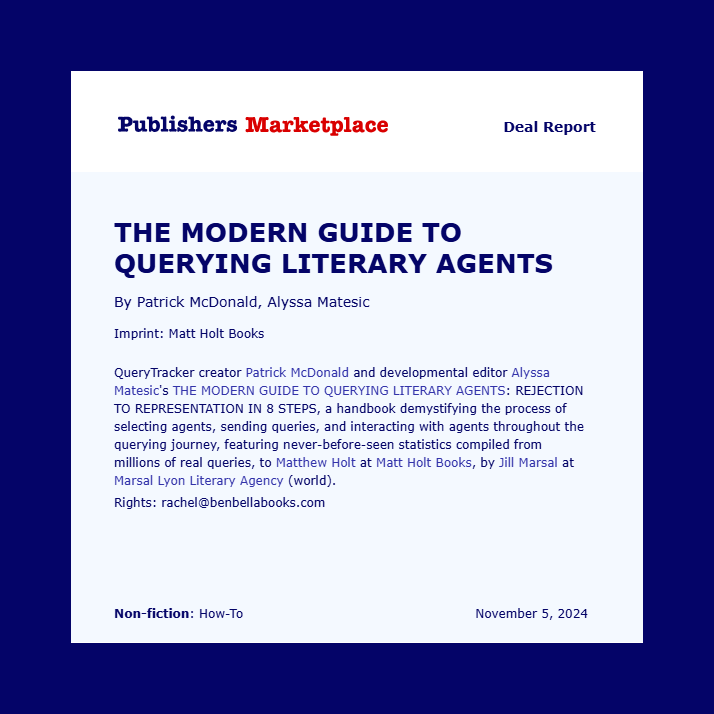3 querying hacks I wish every author knew about 💫
Did you know you can see how long it'll take for an agent to reply?
I know many of you are deep in the querying trenches right now, so I want to do everything I can to make the process just a little bit easier.
In the process of writing my upcoming book, The Modern Guide to Querying Literary Agents, with my wonderful coauthor and the creator of QueryTracker, Patrick McDonald, I discovered that QueryTracker has so many incredibly helpful features that too few authors take advantage of.
To date, QueryTracker has processed millions of queries, making it a treasure trove of data on literary agents and the querying process. You might have used QueryTracker’s database to find agents you’re interested in or to track your own queries, but did you know it can also help you:
Find agents’ average response times
Identify the most popular genres in real time
Discover agents with similar tastes
Pretty cool, right?
(By the way, our book is finally in production, and we can’t wait to share it with you next summer!)
In the meantime, here’s an overview of how to use three of my favorite QueryTracker features.
By the way, if you’re brand new to this newsletter…welcome! Every week, I share practical traditional publishing advice (the real stuff) and interviews with successfully published authors and agents.
If you’re a premium subscriber, you’ll get full access to all posts, and can also submit your first 5 pages to me for critique on my YouTube channel (link down below).
Now back to today’s tips:
1. Finding agents’ average response times
When you’re just starting your querying journey, it can be a smart tactic to begin with agents who are known to respond faster to their queries. That way, you’ll hear back in a shorter time frame — perhaps with some helpful feedback that you can use to then strengthen your subsequent queries. Think of it as sending out an initial test batch.
Side note: I always recommend querying in batches — somewhere between 10 to 15 queries at a time — because that allows you to wait and see if you get some feedback from agents that you can then use to iterate on your query letter and improve it for the next round of agents that you query versus blowing through your entire list of agents upfront.
Remember that once an agent rejects your query, that typically is a final decision, so you want to make sure you’re putting forth your best query materials and the best version of your manuscript. Querying in batches allows you the room to iterate.
So, how do you actually figure out agents’ response times?
Keep reading with a 7-day free trial
Subscribe to Chapter Break to keep reading this post and get 7 days of free access to the full post archives.


